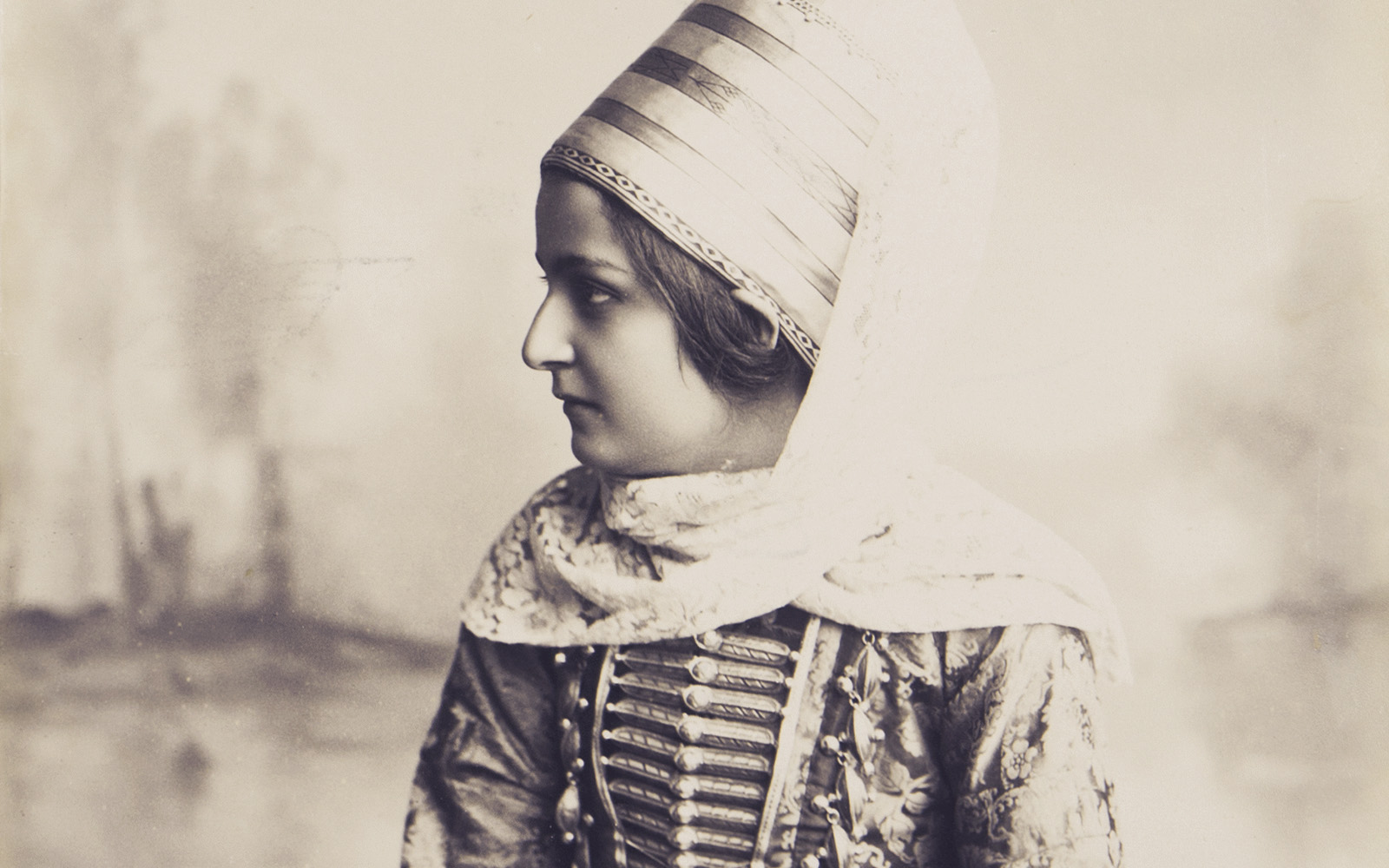
Women: Navigating Presence and Absence
Event Slider
Date
- Closed on Tuesday
Location
Calouste Gulbenkian MuseumWhere are women in the Islamic East Gallery? And how do they exist here? These seemingly simple questions have never been contemplated and spurred a new feminist reading of the Collection. By abandoning the traditional frame of imperial categories, which has long emphasized male hereditary dynasties (Safavids, Mughals, Ottomans), this project sought to recover the voices of the women who made and used these objects, or who had a role in their existence.
Through collaborative research and storytelling, a group of women speaking different languages (Arabic, Persian, Turkish and Portuguese) came together to create new and empowering narratives, ranging from Eve and the Original Sin to Herstory, Women’s Art and Craft, and the Body, explored here.
The participants also brought their own narratives into play during the project, by sharing their own life stories, poems and works of art. They converse about their experiences in a special podcast, accompanied by an online interactive with images and scholarly, personal and imaginary texts.
Project and Podcast
Topics


The power of storytelling

Eve, the Original Sin?

Herstory

Women’s craft or women’s art?

The body
-
Where are women in the Islamic East gallery?
The objects in this section offer a first answer to this question: women mainly appear in the gallery as ‘exotic’ entertainers, offering wine, playing music, dancing and telling stories. An image of ‘oriental’ women as enchanting and beguiling was promulgated by Europeans during the nineteenth century. If we look more closely at these objects, they tell other strong narratives, from the point of view of the women themselves, which we explore here in the third installation of Power of the Word.
Click on the objects to learn more.

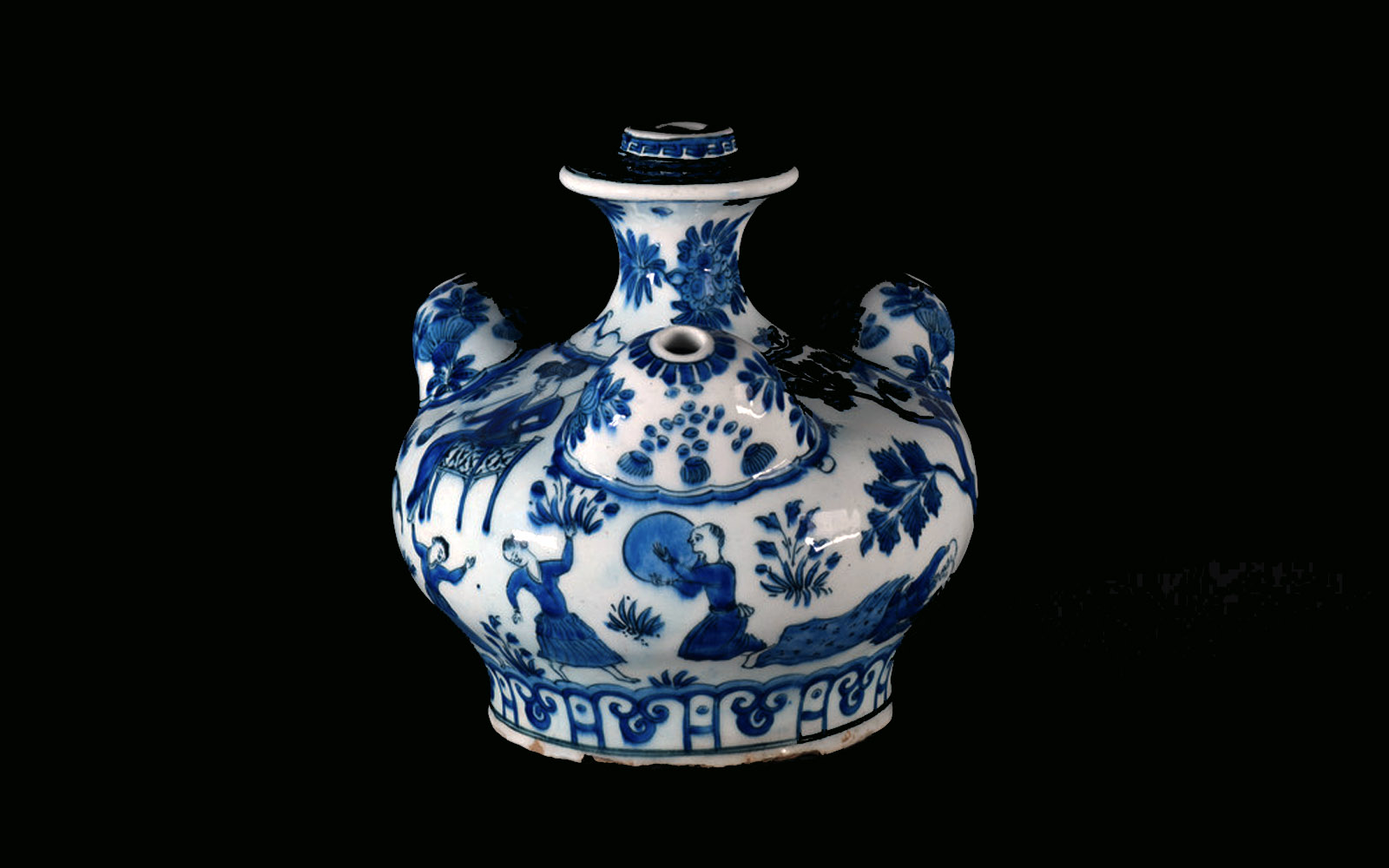

THE VOICES OF THE PROJECT
Guest curator
Shahd Wadi, Researcher in Feminist StudiesCoordination (Calouste Gulbenkian Foundation)
Jessica Hallett (Curator of the Middle East); Diana Pereira and Susana Gomes da Silva (Education Department)Collaboration
Faranaz Keshavjee, Researcher in Islamic Studies; Joana Simões Piedade, Human rights advocate and educator: Leylâ Gediz, Artist; Merve Pakyürek, Cultural Programmer; Özge Topçu, Artist; Rasha Salah, Curator; Sarah Nagaty, PhD student in Cultural Studies; Solmaz Nazari, Degree in Islamic LawSpecial thanks to Clara Serra, Curator of Textiles, Calouste Gulbenkian Museum
-
-
The power of storytelling
Power of the Word explores the artistic-life-stories of the women associated with these Museum objects. In a fifteenth-century Persian miniature, seven women storytellers look down upon the Sassanian king Bahram Gur who keeps (or cages?) them in pavilions. They are more than mere beauties. They share wise tales from seven regions and represent seven days, planets and colours.
Leylâ Gediz’s painting, inspired by this miniature, moves beyond the man-woman binary, leaving out figuration altogether to reduce the image to its basic components, not male nor female, just seven colours representing seven parts of the world.
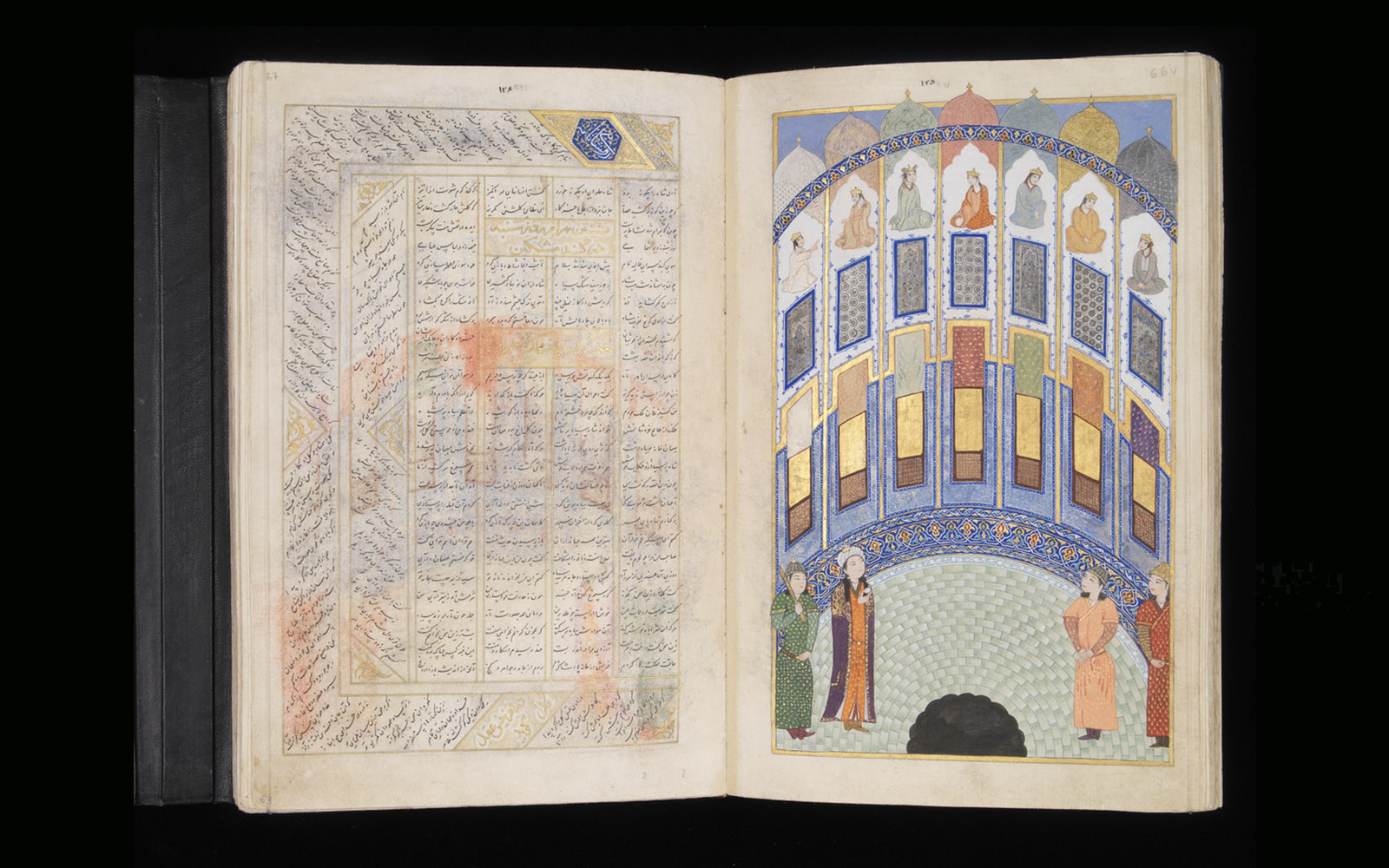
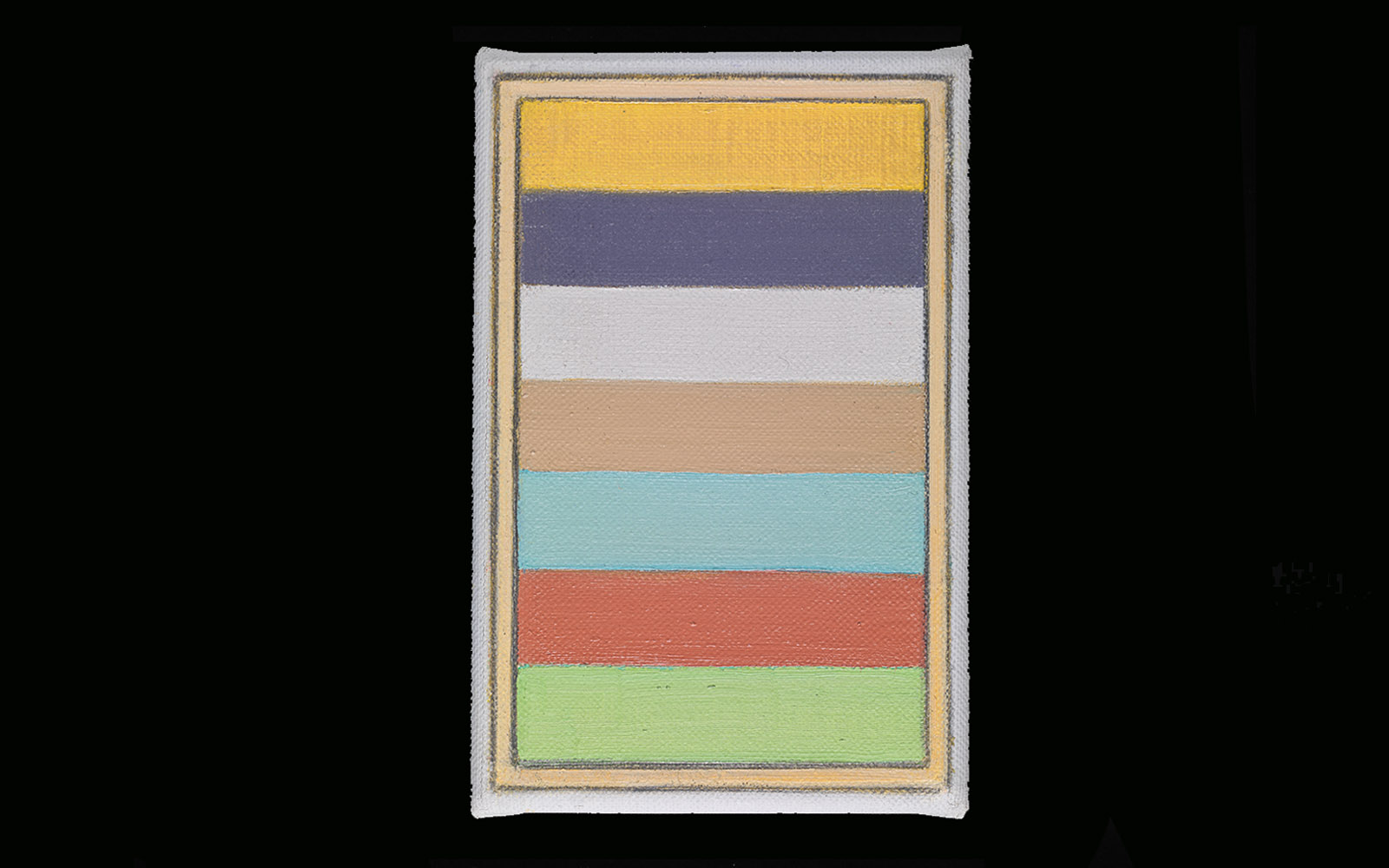
THE VOICES OF THE PROJECT
Guest curator
Shahd Wadi, Researcher in Feminist StudiesCoordination (Calouste Gulbenkian Foundation)
Jessica Hallett (Curator of the Middle East); Diana Pereira and Susana Gomes da Silva (Education Department)Collaboration
Faranaz Keshavjee, Researcher in Islamic Studies; Joana Simões Piedade, Human rights advocate and educator: Leylâ Gediz, Artist; Merve Pakyürek, Cultural Programmer; Özge Topçu, Artist; Rasha Salah, Curator; Sarah Nagaty, PhD student in Cultural Studies; Solmaz Nazari, Degree in Islamic LawSpecial thanks to Clara Serra, Curator of Textiles, Calouste Gulbenkian Museum
-
-
Eve, the Original Sin?
By representing ‘other women’, the fifteenth-century Persian Eve (Hawwa’) in the Anthology of Iskandar Sultan invites us to recognize differences and even to question having a single definition of being a woman. Although the concept of the Original Sin is not part of Islam, empowering ideas about Eve disappeared over time. Adam’s first wife Lilith, who was rebellious, was erased. In the Qur’an, Eve is not described as inferior to Adam, nor is she created from his rib, or blamed for eating from the Immortal Tree. To the contrary, it is Adam who spends 130 years repenting in Sarandib (Sri Lanka). The Immortal Tree is represented by a pomegranate tree in the prayer rug created by the Beshir tribe. Pomegranates are symbols of women’s bodies, fertility, and desire.
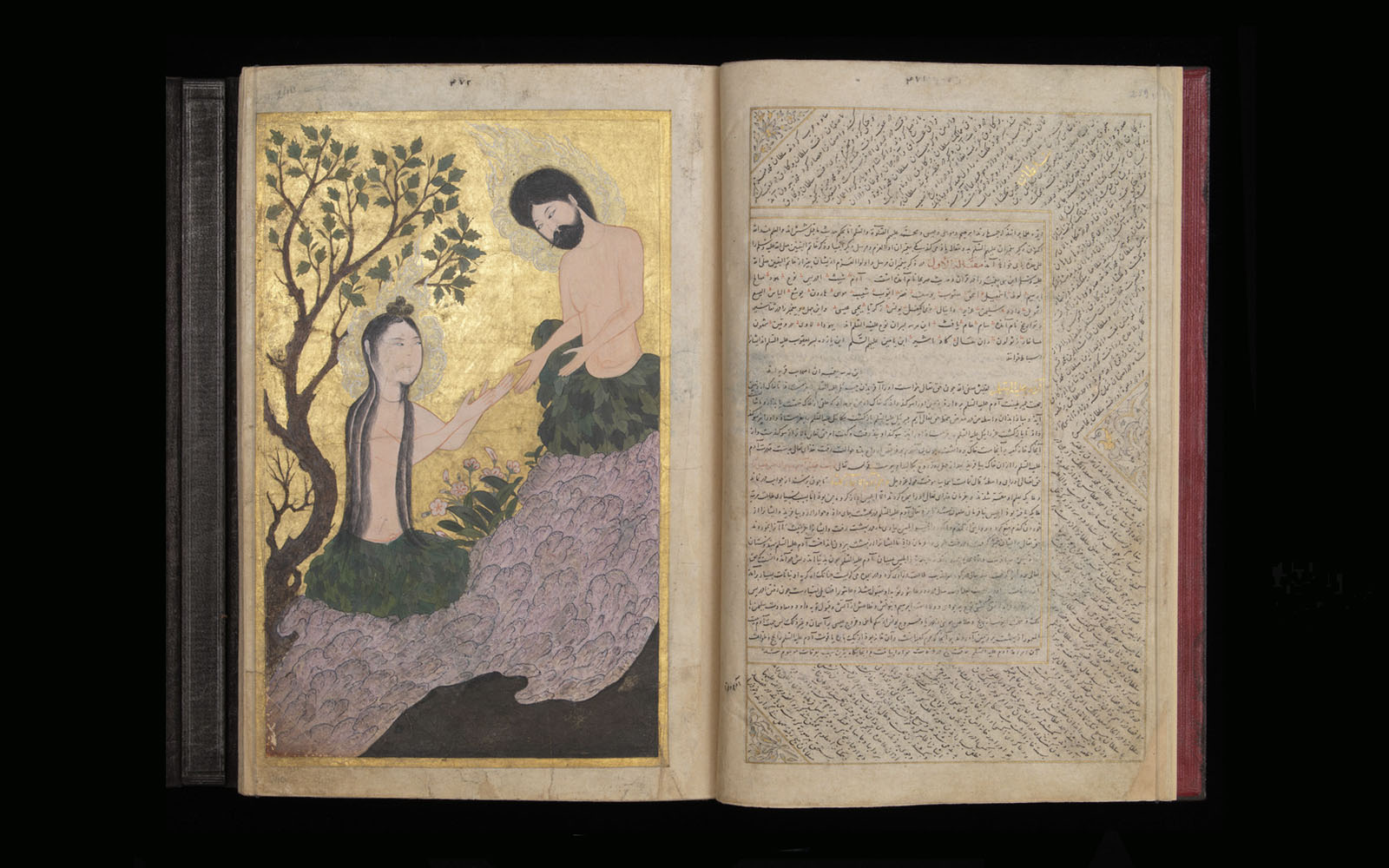
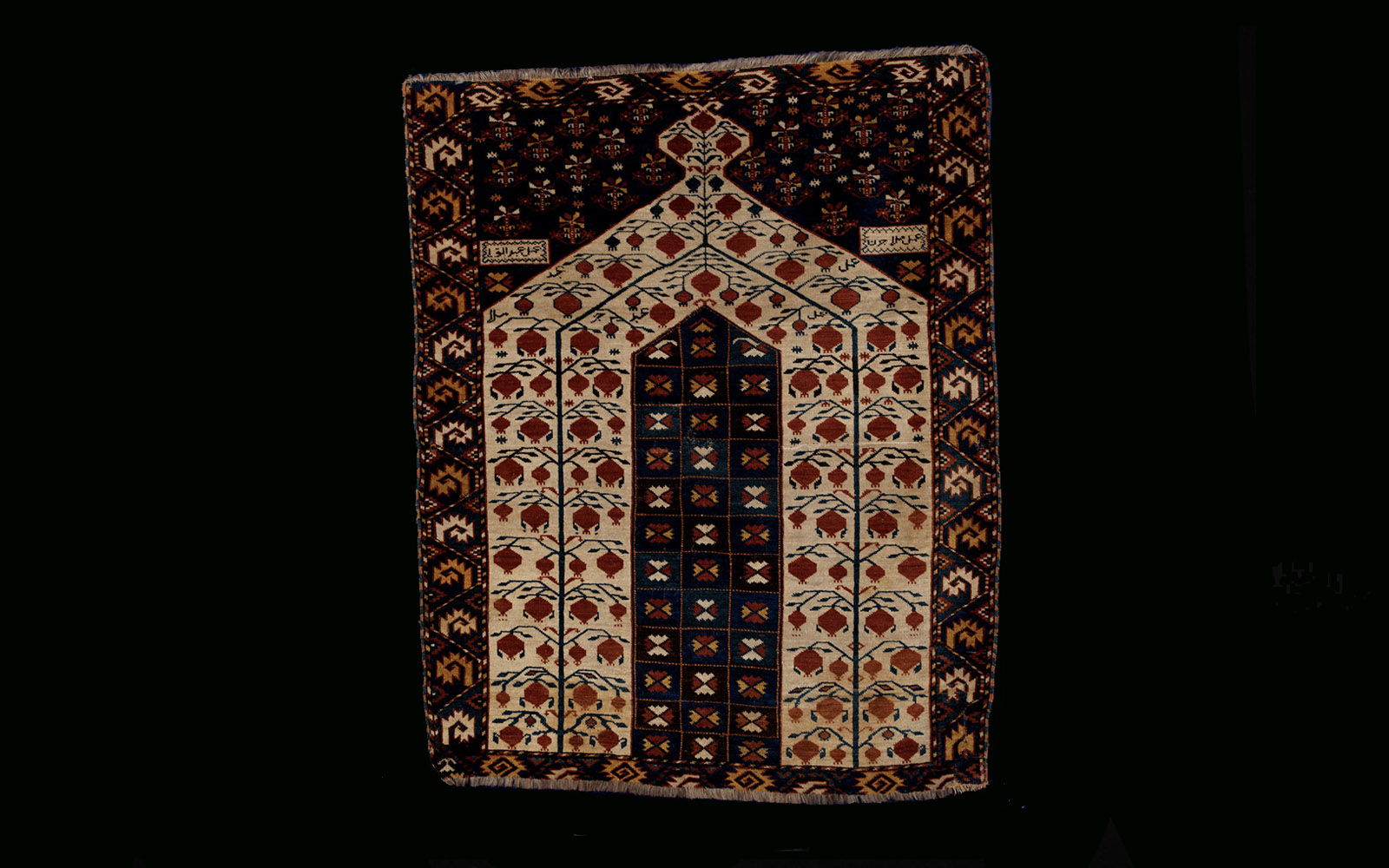
THE VOICES OF THE PROJECT
Guest curator
Shahd Wadi, Researcher in Feminist StudiesCoordination (Calouste Gulbenkian Foundation)
Jessica Hallett (Curator of the Middle East); Diana Pereira and Susana Gomes da Silva (Education Department)Collaboration
Faranaz Keshavjee, Researcher in Islamic Studies; Joana Simões Piedade, Human rights advocate and educator: Leylâ Gediz, Artist; Merve Pakyürek, Cultural Programmer; Özge Topçu, Artist; Rasha Salah, Curator; Sarah Nagaty, PhD student in Cultural Studies; Solmaz Nazari, Degree in Islamic LawSpecial thanks to Clara Serra, Curator of Textiles, Calouste Gulbenkian Museum
-
-
Herstory
‘Herstory’ is a term that reclaims space for women in history where previously there has been absence, silence, or erasure. New research on the collection has sought to uncover women, many of whom were relegated to the background as ‘wives’. In the Ottoman period, some became so powerful a new historical category has been coined: the ‘Sultanate of Women’ (c. 1533-56).
Typically referred to as ‘Calouste Gulbenkian’s wife’, Nevarte has her own story. She used the power of the word to defy social traditions, writing letters in code for her beloved to resist detection. The women pictured in the postcards, collected by Gulbenkian, are anonymous. Like many women, their names have fallen from history.
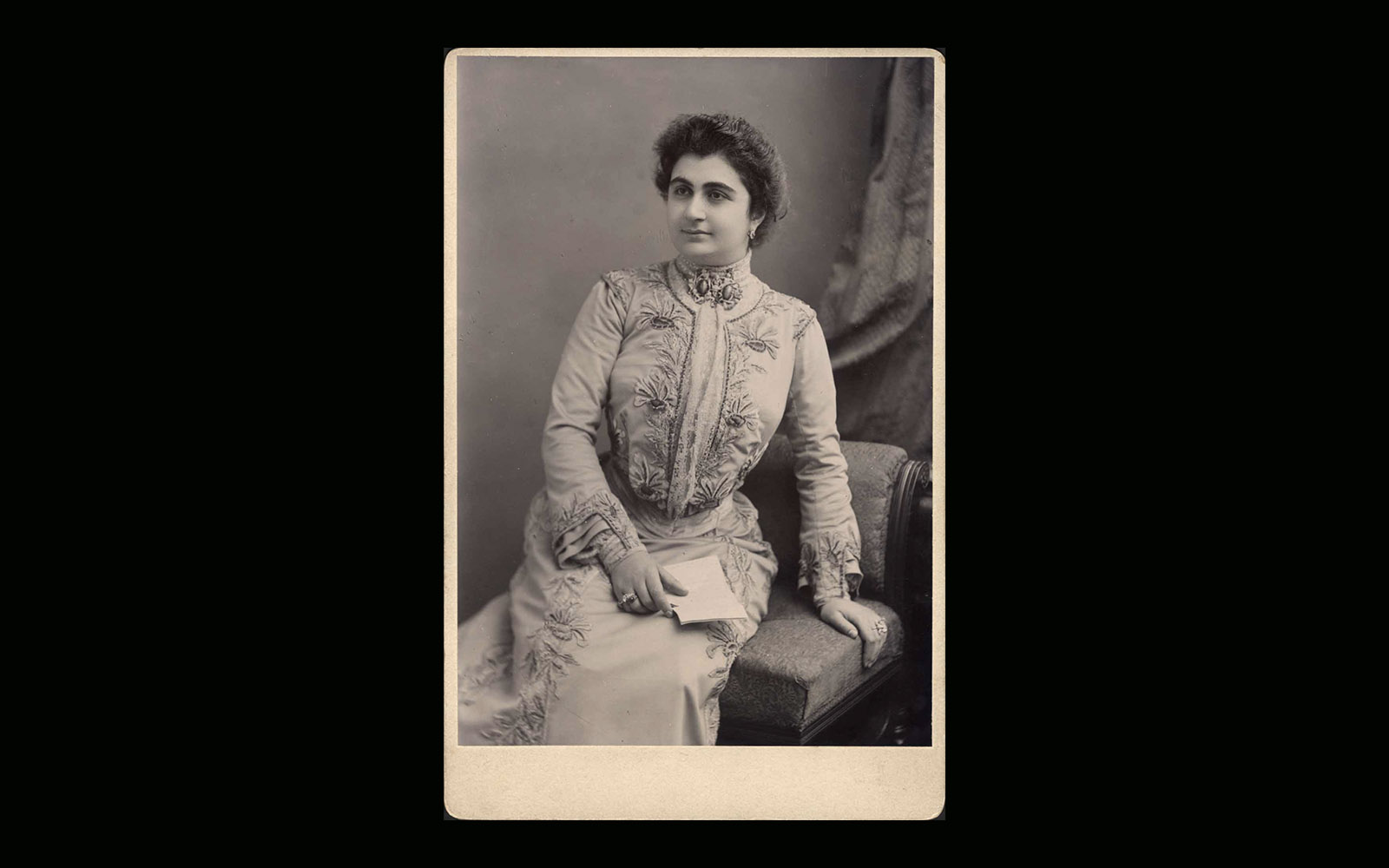
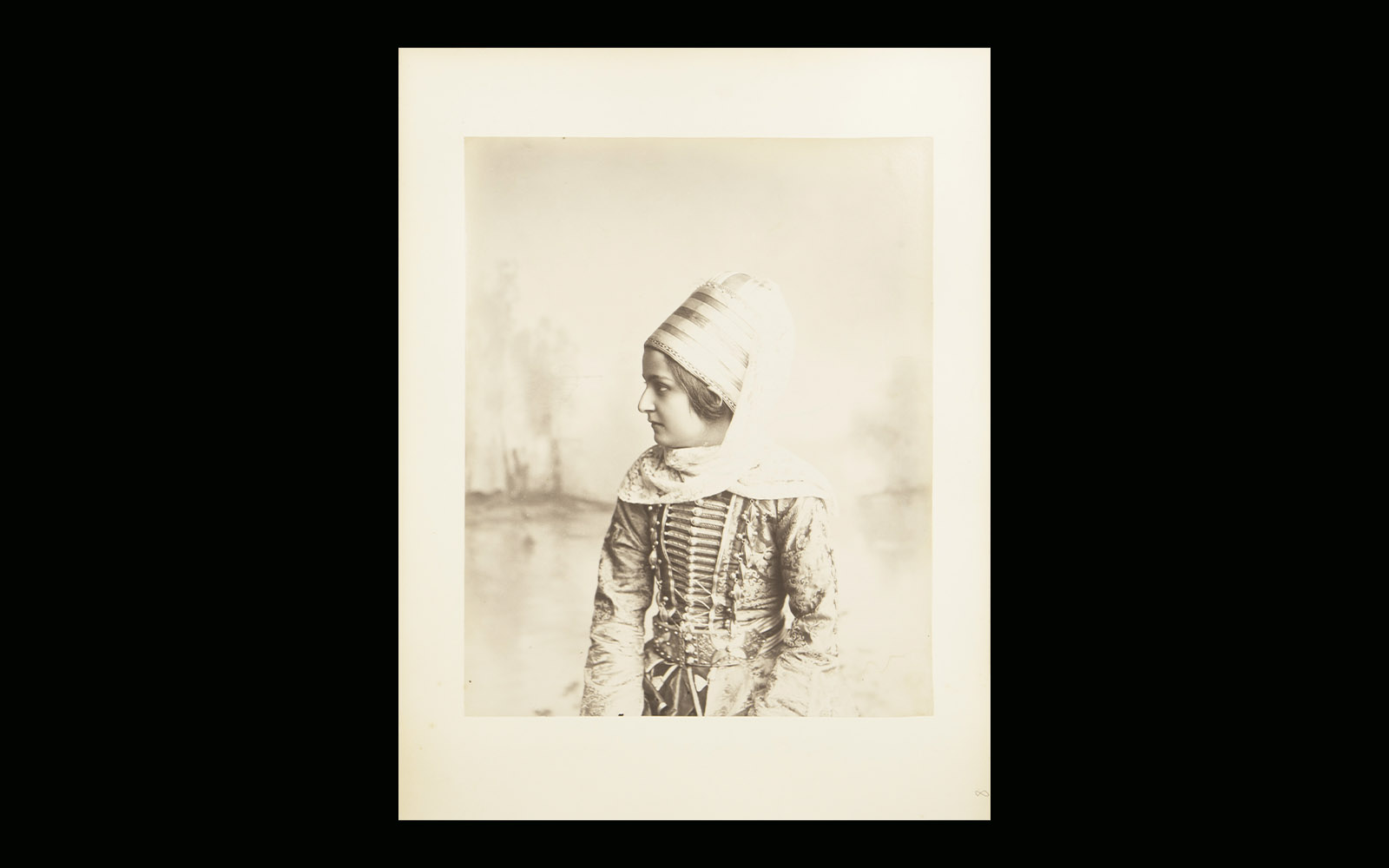
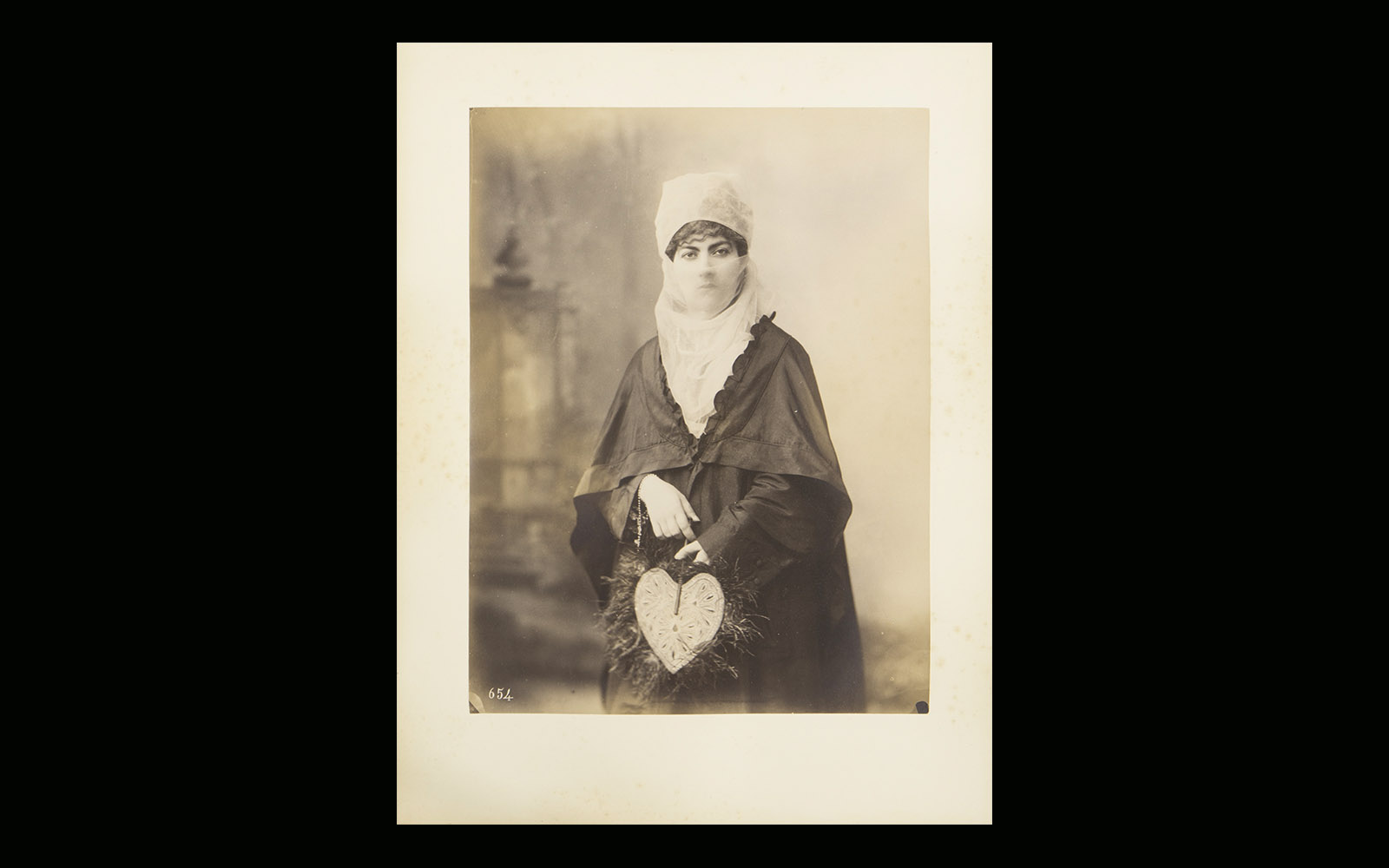
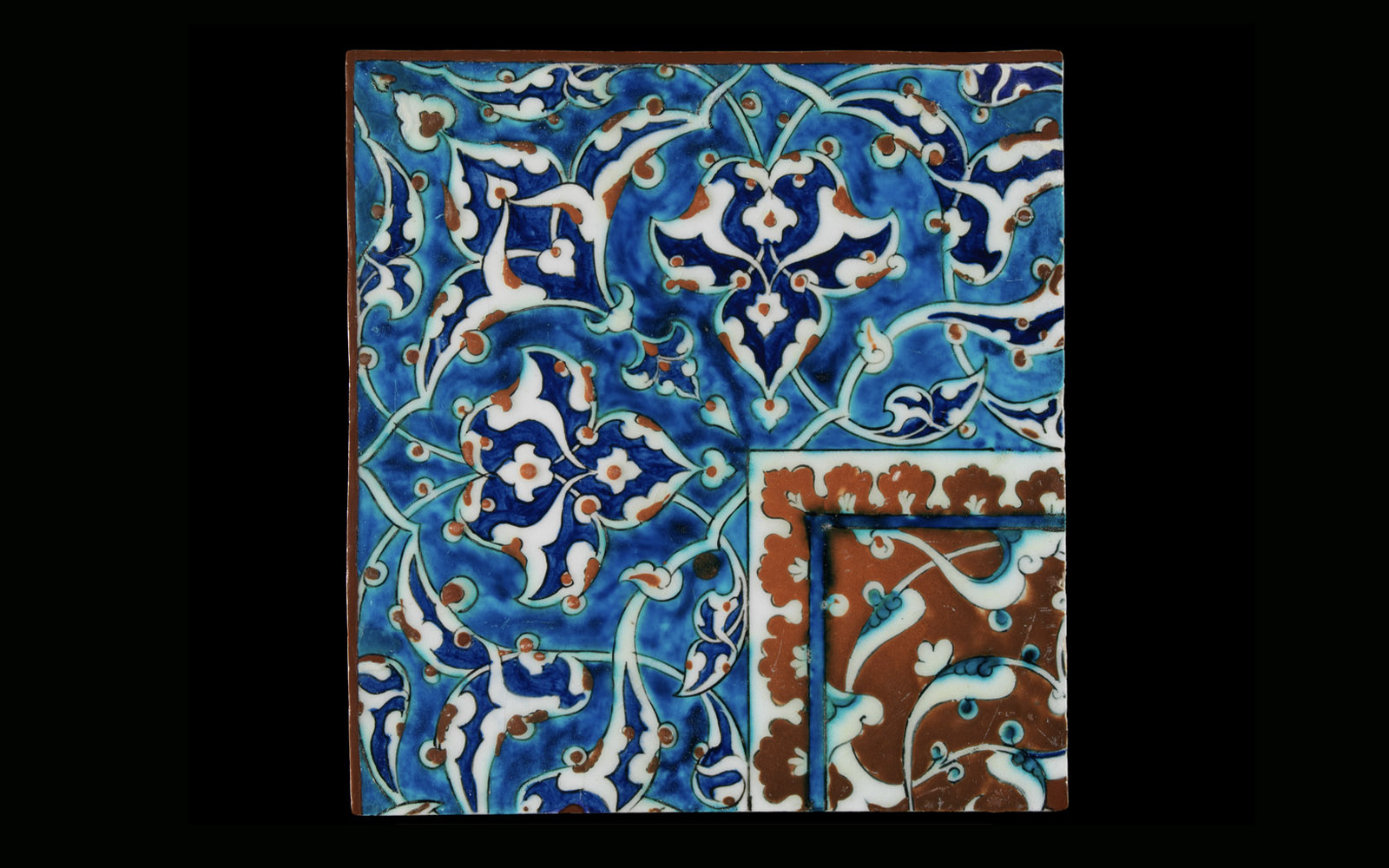
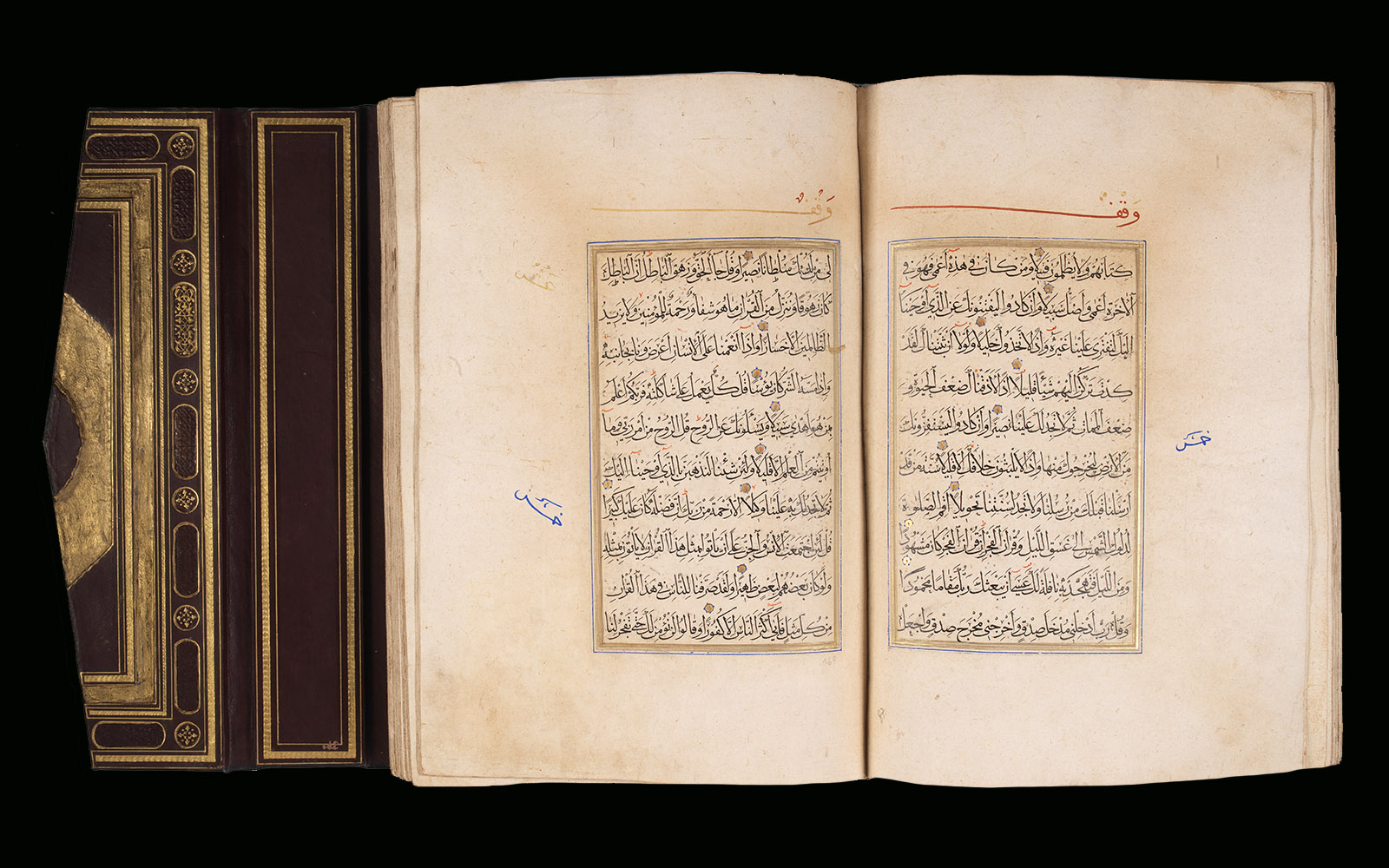
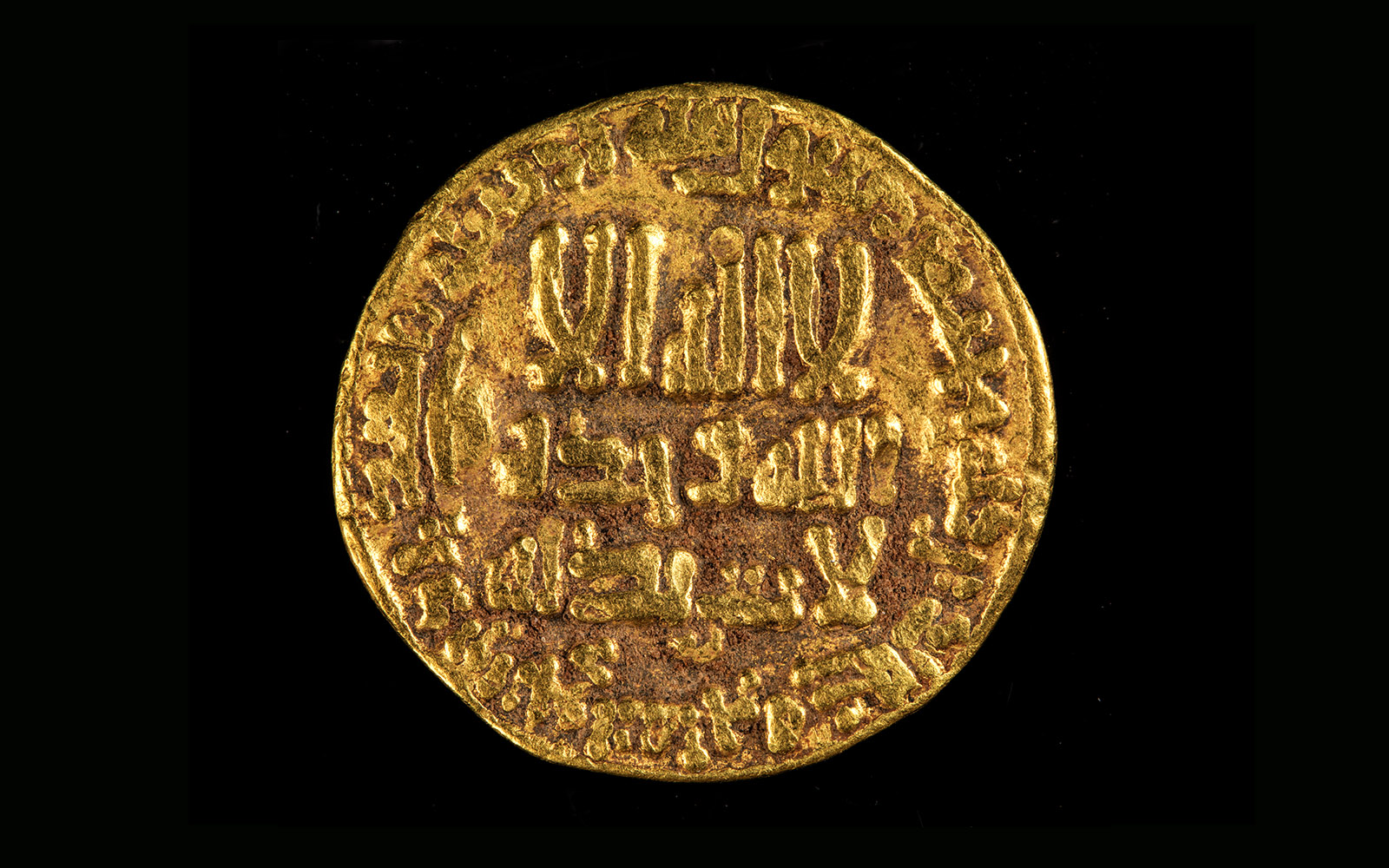

THE VOICES OF THE PROJECT
Guest curator
Shahd Wadi, Researcher in Feminist StudiesCoordination (Calouste Gulbenkian Foundation)
Jessica Hallett (Curator of the Middle East); Diana Pereira and Susana Gomes da Silva (Education Department)Collaboration
Faranaz Keshavjee, Researcher in Islamic Studies; Joana Simões Piedade, Human rights advocate and educator: Leylâ Gediz, Artist; Merve Pakyürek, Cultural Programmer; Özge Topçu, Artist; Rasha Salah, Curator; Sarah Nagaty, PhD student in Cultural Studies; Solmaz Nazari, Degree in Islamic LawSpecial thanks to Clara Serra, Curator of Textiles, Calouste Gulbenkian Museum
-
-
Women’s craft or women’s art?
Western notions of ‘major’ and ‘minor’ arts have consigned a wide range of artistic production by women and other communities to the realm of ‘craft’. The female artists who made these objects are often unidentified and sometimes their works are even signed by men (see the rug in the section ‘Eve, the Original Sin?’). From at least the second millennium BC, women have picked up needle and thread to create embroidery. In more recent times, this art became a place to ‘educate’ women into a feminine ideal, a space they often chose to subvert as a tool of resistance to narrate their own life stories, in a cryptic language. Leylâ Gediz’s painting with embroidered emojis is an encounter between women’s narratives of the past and present.

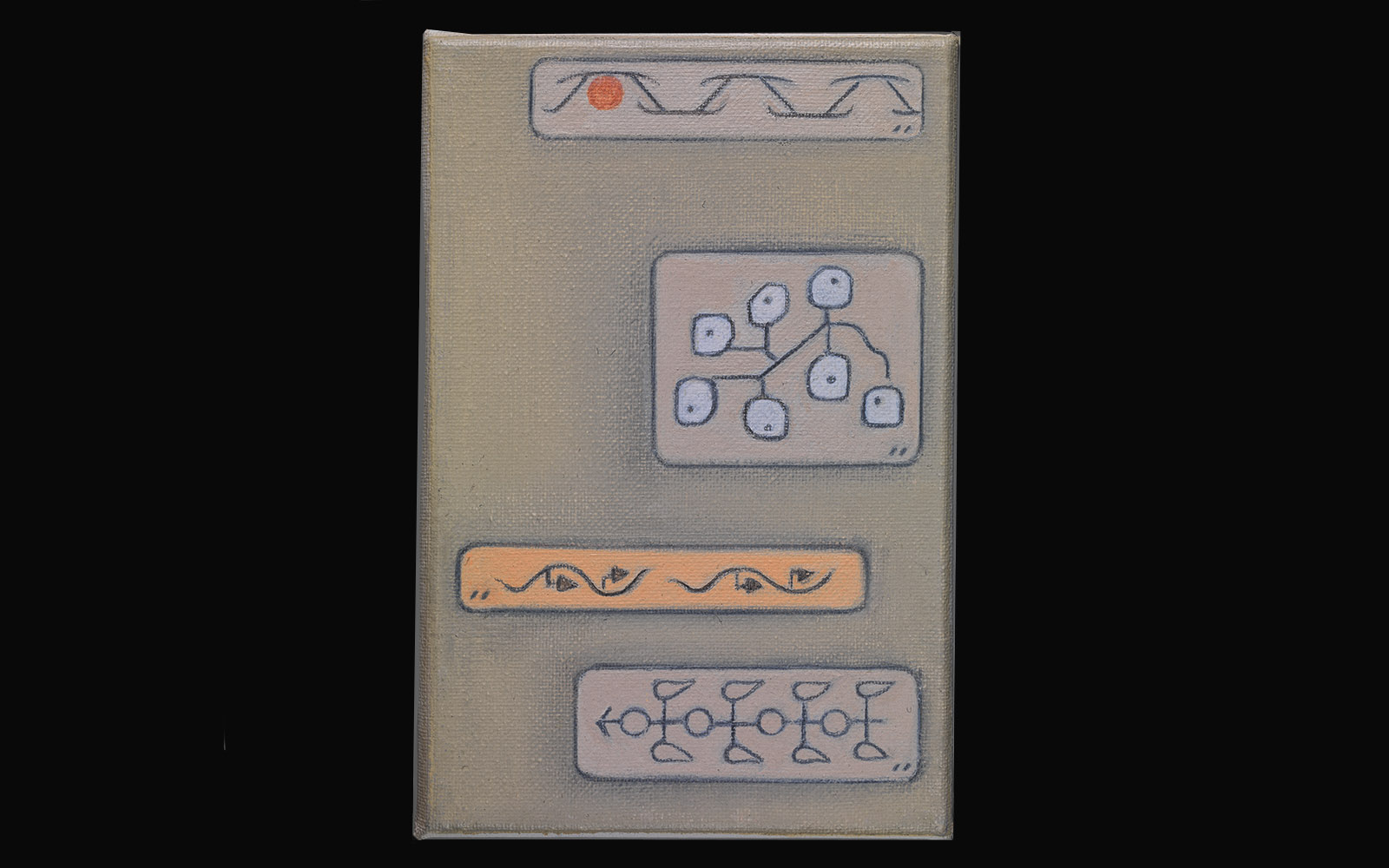
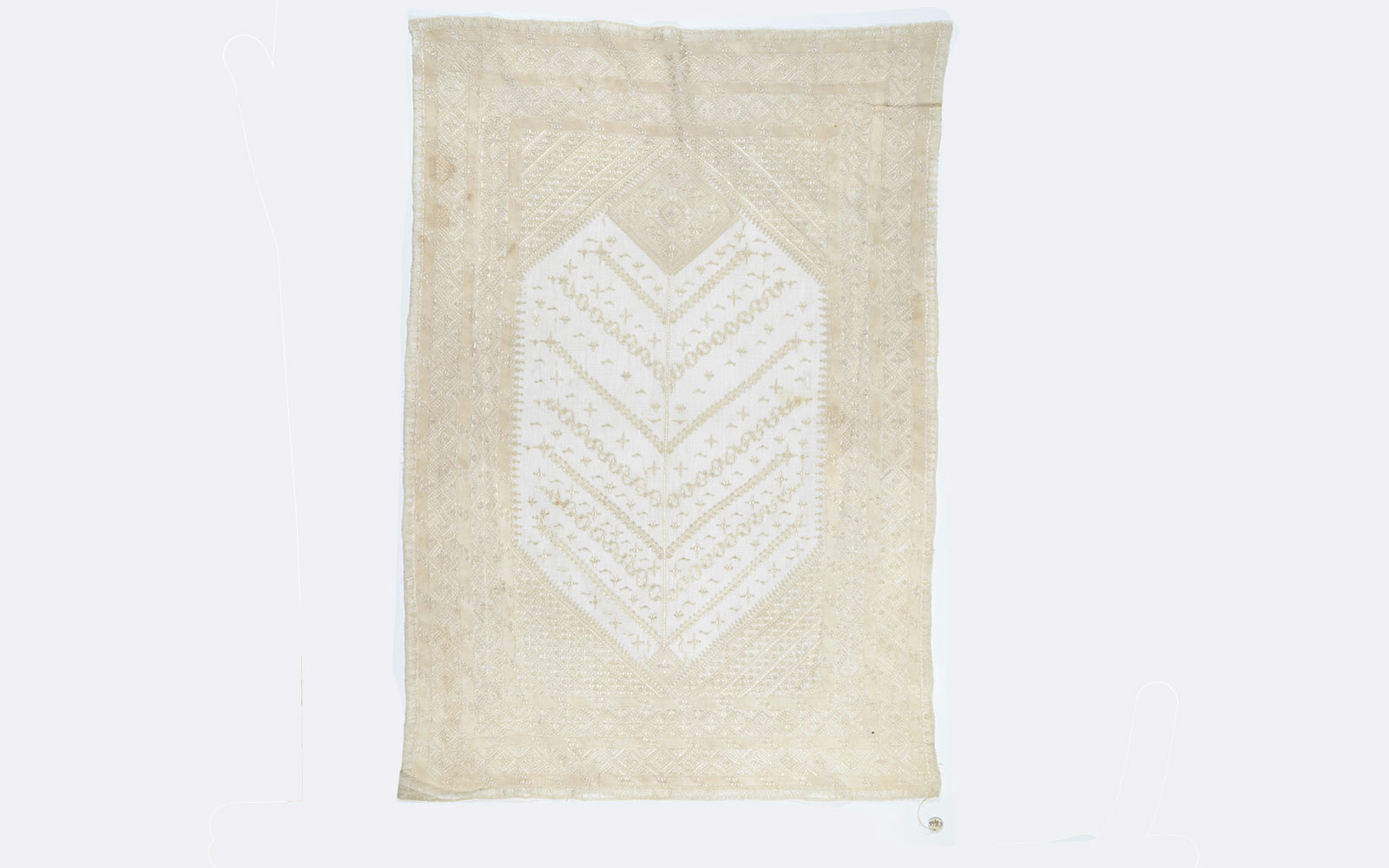
THE VOICES OF THE PROJECT
Guest curator
Shahd Wadi, Researcher in Feminist StudiesCoordination (Calouste Gulbenkian Foundation)
Jessica Hallett (Curator of the Middle East); Diana Pereira and Susana Gomes da Silva (Education Department)Collaboration
Faranaz Keshavjee, Researcher in Islamic Studies; Joana Simões Piedade, Human rights advocate and educator: Leylâ Gediz, Artist; Merve Pakyürek, Cultural Programmer; Özge Topçu, Artist; Rasha Salah, Curator; Sarah Nagaty, PhD student in Cultural Studies; Solmaz Nazari, Degree in Islamic LawSpecial thanks to Clara Serra, Curator of Textiles, Calouste Gulbenkian Museum
-
-
The body
Our story begins and ends with the body. Women narrate their bodies, dream in their bodies, question with their bodies, and resist with their bodies. Beautifully embroidered towels in this section carry memories of the bodies they once embraced in the hamam. This private space for women’s ablutions was also a place for sharing stories and words without social limits on the body. Bathing freely in a pool, the ancient Persian protagonist Shirin, naked and wearing blue harem pants, enjoys this freedom. Through their bodies, women have been seeking to create a political space of resistance and change.

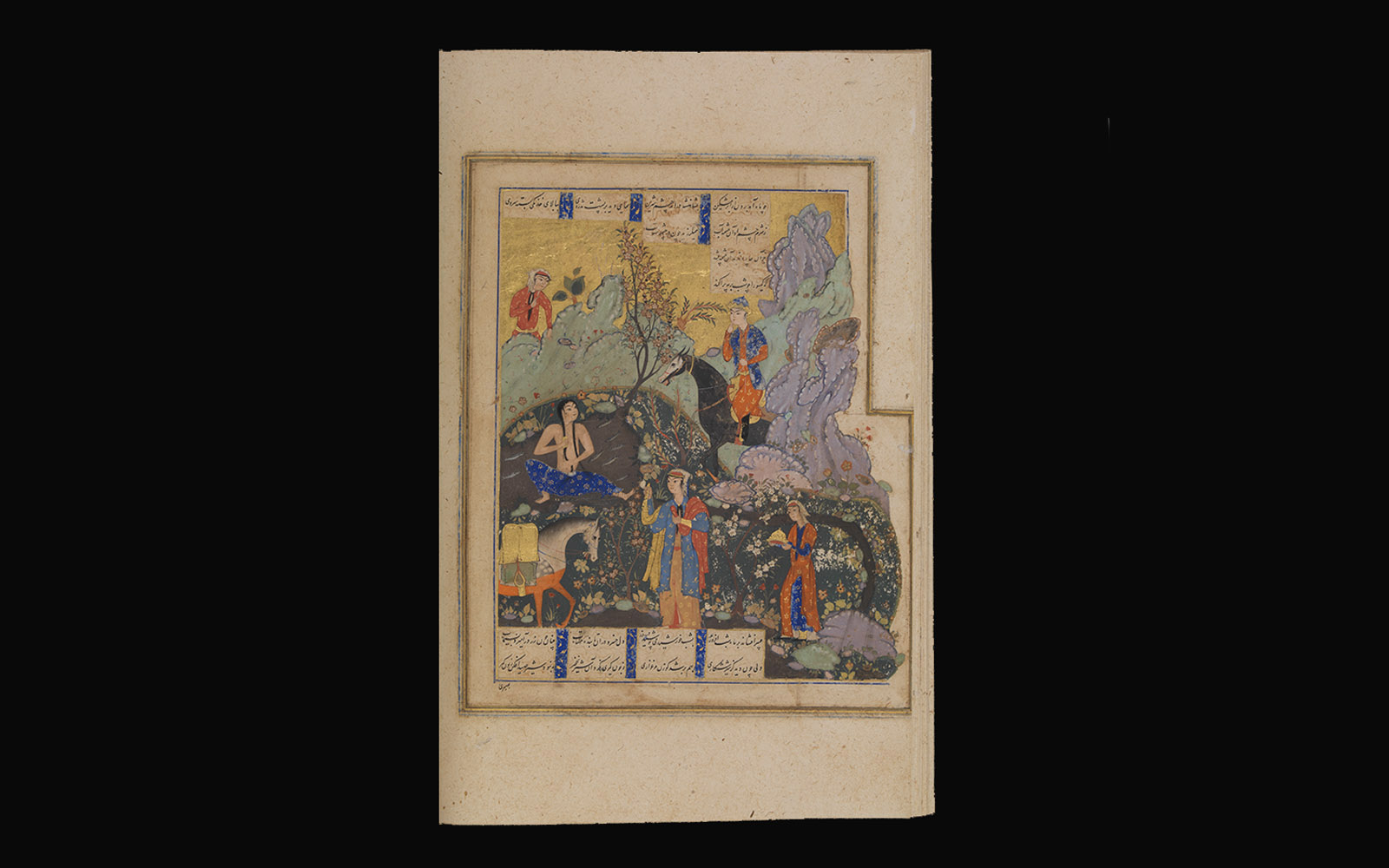

THE VOICES OF THE PROJECT
Guest curator
Shahd Wadi, Researcher in Feminist StudiesCoordination (Calouste Gulbenkian Foundation)
Jessica Hallett (Curator of the Middle East); Diana Pereira and Susana Gomes da Silva (Education Department)Collaboration
Faranaz Keshavjee, Researcher in Islamic Studies; Joana Simões Piedade, Human rights advocate and educator: Leylâ Gediz, Artist; Merve Pakyürek, Cultural Programmer; Özge Topçu, Artist; Rasha Salah, Curator; Sarah Nagaty, PhD student in Cultural Studies; Solmaz Nazari, Degree in Islamic LawSpecial thanks to Clara Serra, Curator of Textiles, Calouste Gulbenkian Museum
-
Complementary Programs
Other ways of thinking and doing
Participative feminist curatorship: the project Power of the Word and the exhibition Women: Navigating presence and absence
Friday, 24 September, 16:00
In the context of the European Heritage Days: Heritage: All Inclusive
Art and Feminisms of the Middle East
With Shahd Wadi, Abdelkader Damani, Rose Issa and Giulia Lamoni / In English
Tue, 8 mar 2022, 17:00
